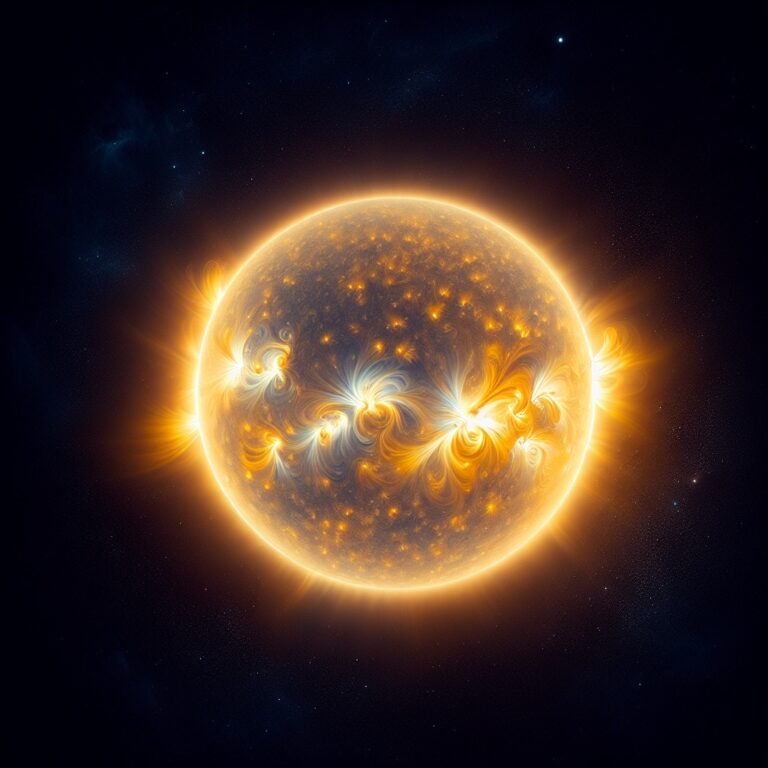The Sun is the center of our solar system and vital for life on Earth. But what does the Sun actually look like?
Answer
The Sun appears as a bright, glowing sphere primarily of hydrogen and helium, with a surface temperature of about 5,500 degrees Celsius (9,932 degrees Fahrenheit) and a distinct yellow-white color when viewed from Earth.
Simple Explanation
The Sun looks like a giant ball of fire in the sky. It’s super hot and bright, shining light and warmth down to Earth. When we see it from here, it often looks yellowish-white.
Detailed Explanation
The Sun is a massive star located roughly 93 million miles from Earth. It is primarily composed of hydrogen (about 74%) and helium (about 24%), engaging in constant nuclear fusion, which generates enormous amounts of energy. This energy radiates out into space in the form of light and heat, making the Sun appear bright and white from space, while it can appear slightly yellowish when viewed from Earth due to atmospheric filtering.
What Features Can We Observe?
- Solar Atmosphere: The Sun has several layers, including the photosphere (its visible surface), the chromosphere, and the corona. The corona, seen during a solar eclipse, has a beautiful halo-like appearance.
- Sunspots: These are cooler, darker spots on the Sun’s surface caused by magnetic activity. They vary in size and can be easily seen with special solar viewing glasses.
- Solar Flares and Prominences: Occasionally, the Sun releases bursts of energy known as solar flares, and loops of gas called prominences can erupt, adding to its dynamic nature.
Observing the Sun, especially with solar telescopes, can reveal these fascinating features. However, it’s crucial to protect your eyes while viewing the Sun, as direct observation can lead to serious eye damage.
Conclusion
The Sun is a magnificent and complex star that plays a fundamental role in our solar system. Understanding its appearance helps us appreciate the essential energy it provides to Earth.
FAQ
Q: Can we see the Sun’s surface with our eyes?
A: No, looking directly at the Sun without proper protection can cause serious eye damage. Special solar filters are required.
Q: Why does the Sun look yellow from Earth?
A: The Earth’s atmosphere scatters smaller wavelengths of light like blue more than yellow, making the Sun appear yellowish during the day.
Q: What are sunspots?
A: Sunspots are cooler and darker areas on the Sun’s surface caused by magnetic disturbances. They are a sign of the Sun’s magnetic activity.
Q: Why is the Sun important for life on Earth?
A: The Sun provides light and heat, essential for photosynthesis in plants and regulating our climate.




